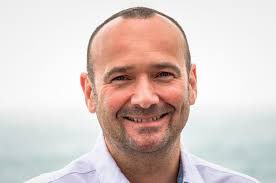
Ever looked at a website address and wondered how the last section (after the full stop) gets chosen or assigned and what purpose it might have? This end section is formally known as a top-level domain or TLD, and according to 1-grid CEO Thomas Vollrath, is one of the most important elements of building your domain name and online presence.
A TLD also goes by the name of domain suffix, and can be broken down into various categories each with their own purpose. TLD’s help both search engines and consumers understand the nature of your website and business, as well as in the country/ies you operate in.
Top-level domain categories
Contents
Top level domains can be broken up into three main categories or extensions. These include:
- Generic
- Country-specific
- Sponsored
Generic top-level domains
Generic top-level domains are the most common and most recognisable TLDs available. They are not specific to a certain region and are mostly used by global businesses or corporations who want to reach a global audience. They offer options such as:
- .com
- .org
- .net
- .biz
- .info
- .xyz
Country-specific top-level domains
These TLDs are used for websites relevant to certain regions. These TLDs are mainly used for local businesses but also my larger corporations that have local, independently run business or franchises underneath them. The most recognised are:
- .co.za (South Africa)
- .ng (Nigeria)
- .us (USA)
- .uk (United Kingdom)
- .eu (European Union)
- .de (Germany)
- .fr (France)
- .cn (China)
- Ca (Canada)
Sponsored top-level domains
These TLDs are used by specific, private entities who wish to distinguish themselves from more general groups. They are often used for important government or educational organisations, but can also be used by smaller private entities to separate themselves by industry. They include:
- .gov (government)
- .edu (education)
- .mil (military)
- .museum
- .travel
What top level domain should I choose?
Choosing a top-level domain for your business or personal website should revolve around its purpose and your audience. If you’re an expanding business looking to go global, then a .com TLD is more relevant to you. If your business is located in South Africa and you don’t intend doing business outside of the country for the foreseeable future, then a .co.za is more relevant to you and your customers.
While TLDs don’t directly affect your SEO efforts, search engines can use your TLD to understand where best to display your website content according to the most relevant audience. If your website’s TLD is .co.za for example, then your content is more likely to rank higher in South African search results.
Can I buy multiple TLDs?
If you are looking to be competitive in your industry across more than one region, purchasing multiple TLDs relevant to your business is a wise choice. You not only ensure that your website can be found online in the event of a searcher’s spelling mistake, but you also ensure your website is found in all the regions you operate in.
Registering both a generic TLD and country-specific TLDs can improve your SEO performance and the personalisation of your brand in specific regions. Virgin Active for example, and virginactive.com but also virginactive.co.za to provide information specific to the gyms and their customers in South Africa.
In summary
A TLD is the ending of your domain name that helps search engines and your audience identify the purpose and scope of your website.
TLDs can be split into three main categories; generic top-level domains, country-specific top level domains and Sponsored top level domains to serve different needs and locations.
Choosing a simple TLD/s best suited to your website’s purpose will help consumers identify and trust you.




